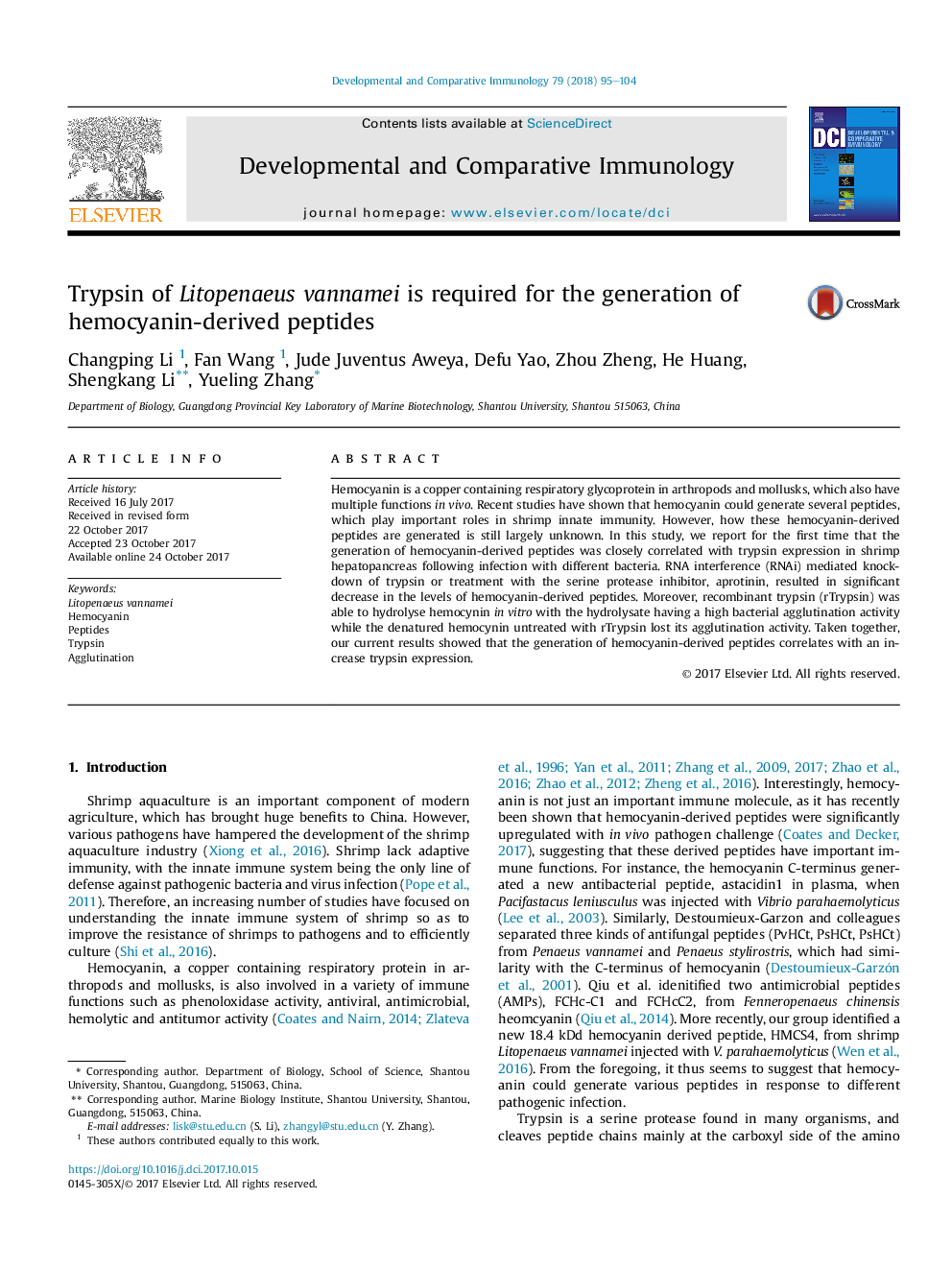| Article ID | Journal | Published Year | Pages | File Type |
|---|---|---|---|---|
| 8497867 | Developmental & Comparative Immunology | 2018 | 10 Pages |
Abstract
Hemocyanin is a copper containing respiratory glycoprotein in arthropods and mollusks, which also have multiple functions in vivo. Recent studies have shown that hemocyanin could generate several peptides, which play important roles in shrimp innate immunity. However, how these hemocyanin-derived peptides are generated is still largely unknown. In this study, we report for the first time that the generation of hemocyanin-derived peptides was closely correlated with trypsin expression in shrimp hepatopancreas following infection with different bacteria. RNA interference (RNAi) mediated knockdown of trypsin or treatment with the serine protease inhibitor, aprotinin, resulted in significant decrease in the levels of hemocyanin-derived peptides. Moreover, recombinant trypsin (rTrypsin) was able to hydrolyse hemocynin in vitro with the hydrolysate having a high bacterial agglutination activity while the denatured hemocynin untreated with rTrypsin lost its agglutination activity. Taken together, our current results showed that the generation of hemocyanin-derived peptides correlates with an increase trypsin expression.
Related Topics
Life Sciences
Biochemistry, Genetics and Molecular Biology
Developmental Biology
Authors
Changping Li, Fan Wang, Jude Juventus Aweya, Defu Yao, Zhou Zheng, He Huang, Shengkang Li, Yueling Zhang,
